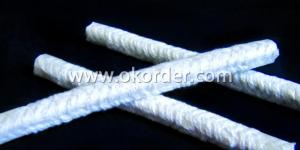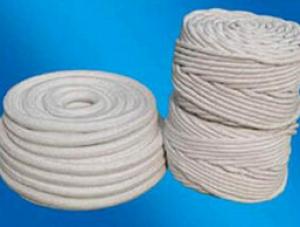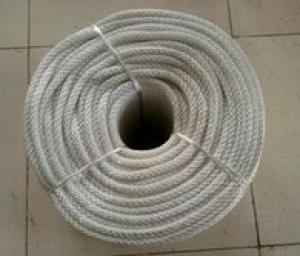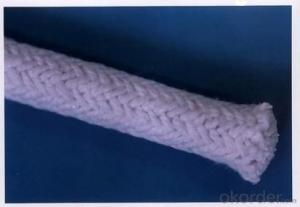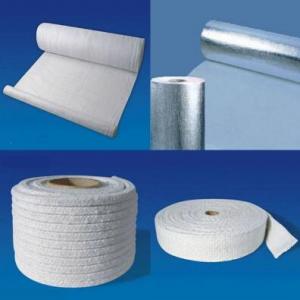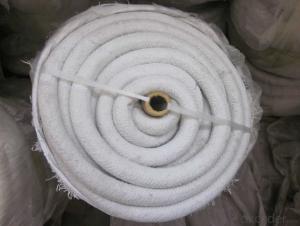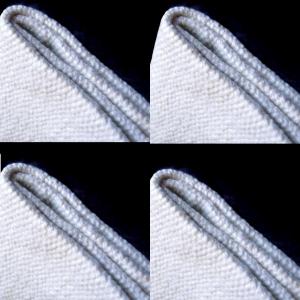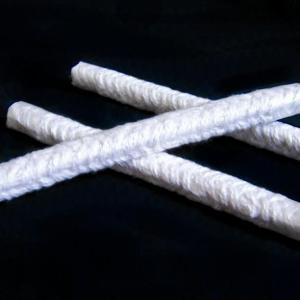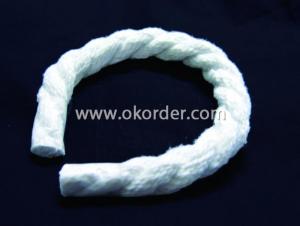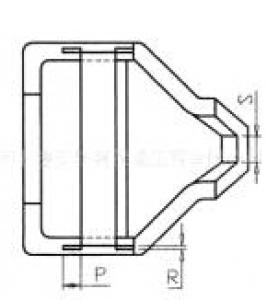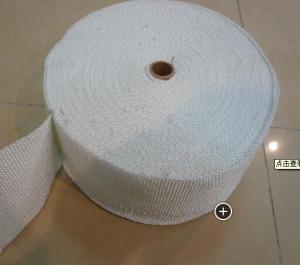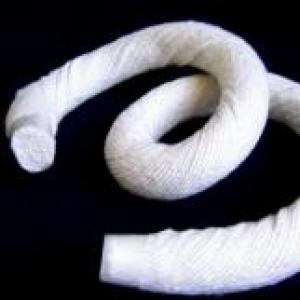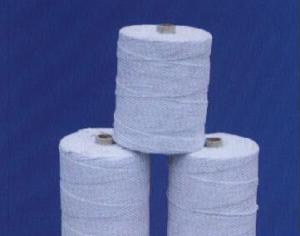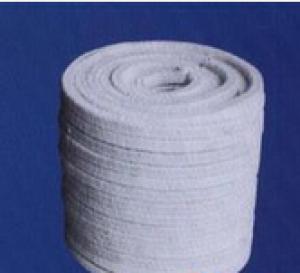Light weight Insulating Firebrick
- Loading Port:
- China Main Port
- Payment Terms:
- TT OR LC
- Min Order Qty:
- -
- Supply Capability:
- -
OKorder Service Pledge
OKorder Financial Service
You Might Also Like
As specified by name, Insulating firebricks are of light weight, low thermal conductivity, excellent strength at ambient and elevated temperature. With very low levels of iron and other impurities, the bricks provide good resistance to chemical attach, can be used in tough, reducing atmosphere conditions. Every brick is ground to precise dimensions.
Items | TM23 | TM26 | TM28 |
Classification Temperature (°C) | 1260 | 1430 | 1540 |
Density (g/cm³) | 0.55-0.6 | 0.8 | 0.9 |
Compressive Strength (MPa) | 1.2 | 1.6 | 2.1 |
Deformation under hot load (0.07MPa) (%) | ≤0.9 at 1100°C | ≤0.2 at 11260°C | ≤0.2 at 1320°C |
Permanent linear shrinkage (%) after 24hrs | -0.5 | -0.4 | -0.5 |
Coefficient of reversible thermal expansion (%) | 0.48 | 0.55 | 0.60 |
Chemical Analysis (%) |
|
|
|
Al2O3 | 45 | 58 | 67 |
SiO2 | 47 | 38 | 30 |
Fe2O3 | 0.7 | 0.7 | 0.6 |
Thermal Conductivity (W/m.K) |
|
|
|
600°C | 0.16 |
|
|
800°C | 0.18 | 0.31 | 0.36 |
1000°C | 0.20 | 0.33 | 0.38 |
1200°C |
| 0.35 | 0.41 |
Applications
► Kilns for the ceramic, tunnel, shuttle
► Forge furnaces
► Carbon baking furnaces
► Atmosphere furnaces
► High temperature kiln lining
► Back up insulating of glass melting tanks
► Insulating of tin bath area for float glass
► Blast furnaces
► Chemical and petrochemical industry
► Non-ferrous metal industry
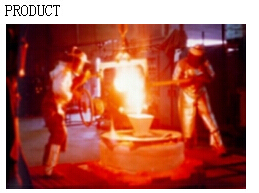
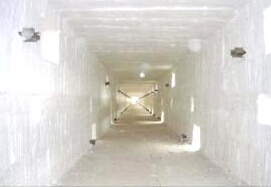
- Q:The difference between ceramic fiber cloth and ceramic fiber paper
- 1. appearance. The ceramic fiber cloth has an obvious grid like appearance, and the ceramic fiber paper is very few or even mesh like.2. density. The density of ceramic fiber paper is greater than that of ceramic fiber cloth.3. thickness. Ceramic fiber paper, the thinnest can do 0.5mm, ceramic fiber paper can not do so thin, generally thin, there are also 2mm.4. stand erect. Ceramic fiber paper can be like in our life that can be placed on the A4 paper, mold, stand up. Ceramic fiber cloth is like the fabric used in our 5. lives. It's soft and doesn't stand upright.6. tear resistance. The toughness of the ceramic fiber paper is not as good as that of the ceramic fiber cloth.
- Q:What are the uses of ceramic fiber blankets?
- The ceramic fiber blanket has a strong resistance to wind erosion, and can be directly contacted with flame and high-speed airflow. Because of its excellent fire resistance, high temperature stability, high thermal shock resistance, low heat capacity and high temperature conditions, high compressive strength.
- Q:What are the man-made fibers polluting the environment?
- Fibers are roughly divided into natural fibers, man-made fibers, and synthetic fibers[natural fiber] refers to the natural growth or formation of fiber, including plant fiber (natural cellulose fiber), animal fibers (natural protein fiber) and mineral fiber. Plant fibers include: seed fiber, phloem fiber, leaf fiber, and fruit fiber. Seed fiber is the unicellular fiber that grows from the epidermal cells of some plant seeds. Such as cotton, kapok. Bast fiber is a single fiber or process fiber obtained from the phloem of some plants. Such as: linen, ramie, jute. Leaf fiber is the process fiber obtained from the leaves or sheaths of some plants. Such as: sisal, abaca. Fruit fiber is the fiber obtained from the fruit of some plants. Coconut fiber. An animal fiber (natural protein fiber) that includes hair, fiber, and gland fibers. Hair follicles: fibers of the hair follicles that have multicellular structures and are composed of keratin. Such as: wool, cashmere, camel hair, rabbit hair, Ma Haimao. Silk fibers: fibers formed from the glands of some insects, especially those produced by lepidopteran larvae, and fibers formed by secretions of some mollusks. Such as: silk.
- Q:What are the differences between digital textile printing ink and printing ink?
- 1. heat transfer ink:Transfer printing for polyester, nylon and spandex fabrics;2. active ink:Suitable for direct spray onto pure cotton, silk, nylon and other fabrics;
- Q:Does the component of textiles contain 70% acrylic? Does it hurt the body?
- Acrylic has high transparency, light transmittance of 92%, a "plastic crystal" reputation. And excellent weather resistance, especially for outdoor, in other plastic crown, and has a good surface hardness and gloss, processing plasticity, can be made into a variety of shapes and products needed. There are a wide variety of boards, rich in color (including translucent swatches), and another feature is that the plate is still able to maintain high transparency.
- Q:What is the function of (ceramic) ceramic powder?
- In the process of porcelain fused to metal (PFM), the powder material used for sintering and making ceramic restoration is made. There are long stone and alumina ceramic powder, as well as a variety of crystal reinforced porcelain powder, high temperature porcelain powder and low temperature porcelain powder.
- Q:Is aluminum silicate fiber completely insulated from heat transfer?
- Fire-resistant insulation layer is used to make ceramic fiber module insulation, thermal insulation thickness of four hundred mm, the ceramic fiber blanket double extrusion, ceramic fiber module in parallel sorting, the trolley furnace wall temperature to plate temperature rise of forty-five degrees, which is almost a best isolation effect.
- Q:Which is better, ceramic fiber or spray velvet?
- With the blowing of thrown silk cotton is two kinds of refractory ceramic fiber cotton cotton in the market at present, according to different production process is defined. Because of the different process, the characteristics of the two kinds of fire-resistant cotton are also different. According to different characteristics, they are applied in different heat insulation fields respectively. Ceramic fiber cotton, also known as aluminum silicate fiber cotton, its main purpose is to use other forms of refractory products, production and processing of raw materials.
- Q:Can ceramic fibers be spun?
- Ceramic fiber itself is relatively brittle, silk is relatively short, spinnability, but after adding viscose (differential polyester glass fiber, even pulp) as the heart can be spun,
- Q:What's the temperature of the high temperature ceramic fiber cloth and ceramic drill cloth?
- Ceramic fiber cloth, stainless steel wire, enhanced use temperature of 1050 degrees, glass fiber reinforced use temperature of 650 degrees.
1. Manufacturer Overview |
|
|---|---|
| Location | |
| Year Established | |
| Annual Output Value | |
| Main Markets | |
| Company Certifications | |
2. Manufacturer Certificates |
|
|---|---|
| a) Certification Name | |
| Range | |
| Reference | |
| Validity Period | |
3. Manufacturer Capability |
|
|---|---|
| a)Trade Capacity | |
| Nearest Port | |
| Export Percentage | |
| No.of Employees in Trade Department | |
| Language Spoken: | |
| b)Factory Information | |
| Factory Size: | |
| No. of Production Lines | |
| Contract Manufacturing | |
| Product Price Range | |
Send your message to us
Light weight Insulating Firebrick
- Loading Port:
- China Main Port
- Payment Terms:
- TT OR LC
- Min Order Qty:
- -
- Supply Capability:
- -
OKorder Service Pledge
OKorder Financial Service
Similar products
New products
Hot products
Related keywords





